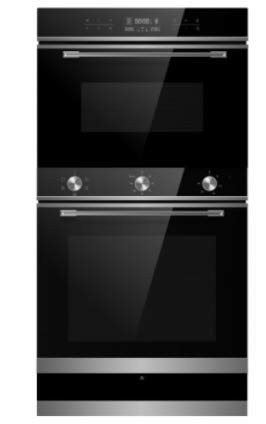The Rise of Integrated Ovens and Hobs: A Comprehensive Guide
In modern kitchens, space optimization and aesthetic appeal are paramount. Integrated ovens and hobs have actually promptly increased to prominence, integrating innovation, functionality, and style into one seamless cooking experience. This article explores the functions, benefits, and considerations of integrated ovens and hobs, in addition to frequently asked concerns about these essential kitchen appliances.
What are Integrated Ovens and Hobs?
Integrated ovens and hobs describe kitchen devices that are created to blend into cabinets while using a plethora of cooking functions. Unlike freestanding designs, these integrated units are generally installed within kitchen cabinets, allowing for a sleek and orderly appearance.
Types of Integrated Ovens
- Single Ovens: These flexible ovens are ideal for smaller sized kitchens or for those who prepare in smaller batches.
- Double Ovens: Perfect for larger households or avid cooks, double ovens offer extra cooking space and flexibility, making it possible for numerous dishes to be cooked concurrently.
- Steam Ovens: For health-conscious customers, steam ovens provide a much healthier cooking approach that maintains nutrients in food.
- Microwave Ovens: Often designed as integrated units, microwave ovens are ideal for quick cooking and reheating tasks.
Types of Integrated Hobs
- Induction Hobs: These hobs use electro-magnetic energy to cook food effectively and rapidly. They are applauded for their safety features and precise temperature level control.
- Gas Hobs: Offering traditional cooking methods, gas hobs offer instant heat and are favored by many expert chefs.
- Ceramic Hobs: These hobs provide smooth surface areas that are easy to tidy and maintain. They offer an effective heating technique however might take longer than gas or induction.
Benefits of Integrated Ovens and Hobs
Integrating ovens and hobs into kitchen cabinetry includes different advantages, making them an attractive option for home design and cooking enthusiasts alike.
Aesthetic Appeal
- Sleek Design: Integrated designs offer a unified appearance that improves the overall aesthetic of the kitchen.
- Customized Layout: Homeowners can design their kitchen without large home appliances disrupting the circulation.
Area Optimization
- Efficient Use of Kitchen Space: By perfectly fitting into cabinetry, integrated systems supply more functional work space.
- Elimination of Clutter: Integrated systems reduce visual clutter, developing a more orderly environment.
Boosted Functionality
- Advanced Features: Many integrated ovens and hobs featured innovative innovation such as clever controls, precise temperature settings, and several cooking functions.
- Custom-made Cooking Experience: Users can customize their cooking experience with differing cooking techniques, like convection, baking, or grilling.
Increased Home Value
- Modern Appeal: A properly designed kitchen with integrated devices can substantially boost a home's resale value, making it more attractive to possible buyers.
Considerations When Choosing Integrated Ovens and Hobs
While integrated ovens and hobs offer various benefits, there are several elements to think about when picking the ideal design for your kitchen.
Kitchen Space and Layout
- Size: Ensure that the integrated oven and hob fit the existing kitchen cabinetry and kitchen layout.
- Ventilation: Proper ventilation is important, particularly for gas hobs. Guarantee that the kitchen is properly ventilated to mitigate cooking odors and excess heat.
Installation Requirements
- Professional Installation: Integrated systems might require professional installation to guarantee they fit and operate properly.
- Pipes Needs: Some steam ovens may require water connections, which need to be planned for during setup.
Budget plan
- Cost Variance: Integrated ovens and hobs can range in price depending upon brand, functions, and setup costs.
- Long-Term Savings: While the preliminary financial investment may be higher, think about prospective energy cost savings and resilience with time.
Brand and Features
- Reputation: Research trusted brands understood for dependability and client service.
- Features: Look for features that line up with cooking preferences, such as self-cleaning options, Wi-Fi connectivity, and diverse cooking modes.
Comparison of Integrated Ovens and Hobs
| Feature | Integrated Ovens | Integrated Hobs |
|---|---|---|
| Design | Seamless built into kitchen cabinetry | Flush with counter tops |
| Cooking Type | Convection, steam, microwave | Gas, induction, electric |
| Cleaning up | Self-cleaning alternatives offered | Easy-to-clean surfaces |
| Energy Efficiency | Typically energy-efficient | Varies by type (induction is best) |
| Installation | Requires professional aid | May need special venting (for gas) |
Frequently Asked Questions (FAQs)
1. What is the primary advantage of an integrated oven over a freestanding one?
Integrated ovens offer a cleaner, more structured look while making the most of kitchen space.
2. Are integrated hobs simple to set up?
Many integrated hobs require expert setup, especially gas units, due to safety standards.
3. Can I put an integrated oven anywhere in my kitchen?
Integrated ovens must be placed within proper cabinets developed for their size and ventilation needs.
4. Do integrated Fan Oven Sales and hobs require special maintenance?
Regular cleaning and checks of seals and features are important to keep efficiency, however they do not require special upkeep beyond standard appliance care.
5. How do I pick in between gas and induction hobs?
It depends upon personal choice, cooking routines, and spending plan. Induction is quicker and safer, while gas provides instant heat and more control.
Integrated ovens and hobs are a necessary function in modern kitchen design, supplying both visual appeal and valuable performance. By thinking about the benefits, layout, installation requirements, and brand credibility, property owners can make informed choices that boost their cooking experiences. As kitchen patterns continue to develop, integrated devices will likely stay at the forefront, developing spaces that are both beautiful and useful.

